No. 26
Stop mold and mildew
It’s ugly and sometimes unhealthy—but you can beat it
The air around us is filled with mold spores looking for a nice place to start a family. And when they find a place, they take over fast, causing ugly growth, stains, odors and possibly even health problems. So here’s how to prevent your home from becoming their home.
First, understand this: Mold needs moisture
Fighting mold is much easier if you know that mold can’t live without a damp environment. Controlling the moisture source is usually the best way to control mold.
Three biggest causes of mold

Water leaking into the house from the roof, walls or ground.

Water leaking from plumbing or appliances.

Condensation produced when warm, moist air contacts a cool surface.
Voice of experience
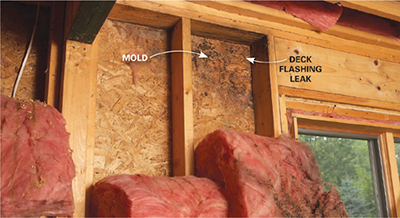
Mold can be a warning sign
When I tore into this wall during a remodeling job, the mold told me that there was trouble outside. Sure enough, I found that there was no flashing above the window, so water was leaking into the wall. That repair cost the homeowner a few bucks, but she was lucky. If not for the telltale mold, that leak would have eventually cost her thousands in damage.

Mark Petersen, contractor and The Family Handyman editor
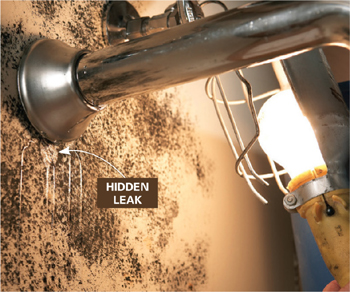
Look for leaks
If you see mold near water pipes, waste lines, icemaker lines or plumbing fixtures, chances are the mold is feeding off a nearby leak. Let the water run while you check the pipes and surrounding area for damp spots. If you see mold on or near ceilings, suspect roof leaks. Remember that water can travel in any direction—down, sideways or even up when it wicks into absorbent material like drywall—so the actual leak may be some distance from the mold.
Prevent bathroom mold
With three moisture-producing fixtures—sink, tub and toilet—packed into a small space, a bathroom is the perfect home for mold and mildew. Here’s how to reduce the dampness that feeds fungi:
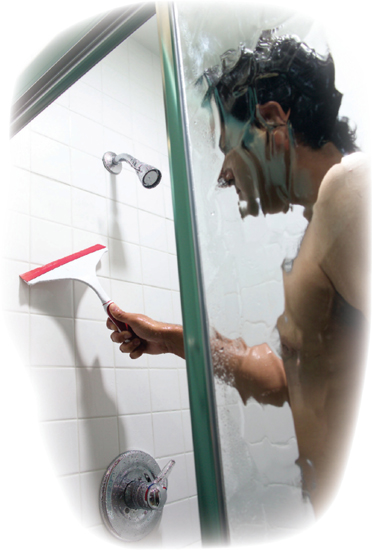
Squeegee after showering
Squeegee water off the shower walls after every bath or shower. That eliminates at least three-fourths of the moisture that supports mold and mildew growth.
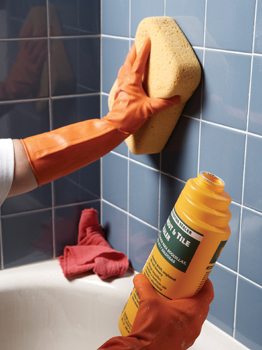
Seal the grout
Grout absorbs water and supports mold growth for days after a shower. But you can lock out water. First, clean tile and grout thoroughly, then spray on an antimicrobial treatment (such as Concrobium Mold Control). Finally, seal the grout with two coats of grout sealant to keep water from penetrating the grout and wall.
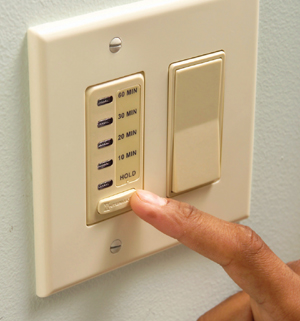
Run the bath fan
Flip on the fan just before your bath or shower and keep it on for 15 to 30 minutes afterward. Better yet, install a timer switch so you don’t have to remember to turn off the fan. For the ultimate in convenience and effectiveness, install a humidistat switch, which will turn on the fan whenever it detects high humidity. Some fans have a humidistat switch built in.
Attack closet mildew
Closets are often cool, damp and dark—fungus paradise. Here’s how to deal with mold and mildew in closets or on other walls.
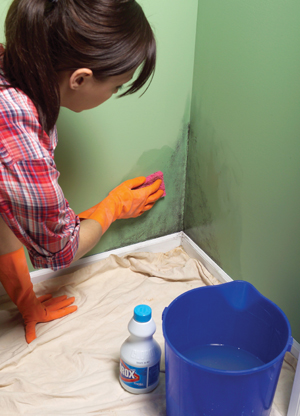
Remove mildew
Clean and kill mildew with a mix of three parts water and one part bleach. Scrub thoroughly, but don’t worry if the stains don’t completely disappear.
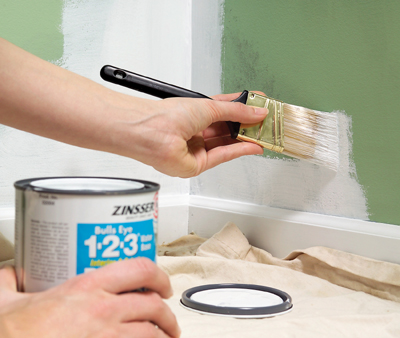
Prime the area
Mildew stains can bleed through paint, so coat the area with a stain-blocking primer before painting.
Is it mold or dirt?
Most mold is unmistakable, but sometimes it just makes a surface look dirty. For a quick test, dip a swab in diluted bleach (1 part bleach, 16 parts water) and dab it on the wall. If the spot quickly lightens (or keeps coming back after cleaning), assume it’s mold.
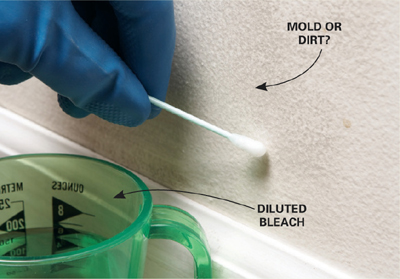
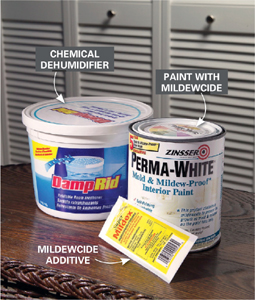
Anti-mildew weapons
• Add mildewcide to paint or use paint that already contains mildewcide (check the label).
• Run a dehumidifier in damp rooms.
• Cut closet humidity. Chemical dehumidifiers are nontoxic products that absorb moisture from the air.
• Leave closet doors open or replace solid doors with louvered doors to increase airflow.












